Bunch of New Bright Regions & An Earth-Directed Solar Storm | Space Weather News 09.05.2021
This Space Weather News forecast sponsored in part by Millersville University:
https://www.millersville.edu/swen
This week our Sun turns up the brightness with no less than four new active regions emerging in Earth-view. All of these regions are growing rapidly, in fact, one of them, region 2864 has launched an earth-directed solar storm. This storm is wispy and likely wont cause too big of a disturbance, but early predictions indicate impact at Earth late on September 9. As such, aurora views should be visible at high-latitudes, but at mid-latitudes, as things stand now, there is only a slim chance. Amateur radio operators and emergency responders should be smiling as these bright regions are also boosting the solar flux into the high 80s. If they continue to grow at this pace we could see solar flux into the 90s within this week, which means radio propagation on Earth's dayside continues inch ever closer to the "good" range. Although they are growing rapidly, these sunspot regions are not currently a risk for big flares, but they are firing C-class flares. Thus GPS users should remain vigilant near dawn and dusk as GPS reception could be less reliable for a few hours straddling both sunrise and sunset. Learn the details of the coming solar storm, watch the fast rise of the numerous sunspot clusters, and see what else our Sun has in store this week!
Want early access to these forecasts, tutorials on Space Weather, & more? Visit:
https://patreon.com/SpaceweatherWoman
For daily and often hourly updates (during active times) visit me on Twitter:
https://twitter.com/TamithaSkov
For a more in-depth look at the data and images highlighted in this video see these links below.
Solar Imaging and Analysis:
SDO: http://sdo.gsfc.nasa.gov/data/
Helioviewer: http://www.helioviewer.org/
Flare Analysis: http://www.lmsal.com/solarsoft/latest_events/
Computer Aided CME Tracking CACTUS: http://www.sidc.oma.be/cactus/out/latestCMEs.html
GOES Xray: http://www.swpc.noaa.gov/rt_plots/xray_1m.html
SOHO: http://sohodata.nascom.nasa.gov/
Stereo: http://stereo.gsfc.nasa.gov/
GONG magnetic field synoptic movie: https://gong.nso.edu/data/magmap/standard_movie.html
GONG magnetic field synoptic charts: http://gong.nso.edu/data/magmap/
LMSAL Heliophysics Events HEK http://www.lmsal.com/isolsearch
Solar Wind:
DISCOVR solar wind: http://www.swpc.noaa.gov/products/real-time-solar-wind
ACE Solar Wind: http://www.swpc.noaa.gov/products/ace-real-time-solar-wind
NASA ENLIL SPIRAL: https://iswa.gsfc.nasa.gov/IswaSystemWebApp/iSWACygnetStreamer?timestamp=2038-01-23+00%3A44%3A00&window=-1&cygnetId=261
NOAA ENLIL SPIRAL: http://www.swpc.noaa.gov/products/wsa-enlil-solar-wind-prediction
Magnetosphere, Ionosphere, Atmosphere:
GOES Magnetometer: http://www.swpc.noaa.gov/products/goes-magnetometer
Ionosphere D-Region Absorption (DRAP) model: http://www.swpc.noaa.gov/products/d-region-absorption-predictions-d-rap/
Auroral Oval Ovation Products: http://www.swpc.noaa.gov/products/aurora-30-minute-forecast
Global 3-hr Kp index: http://www.swpc.noaa.gov/products/planetary-k-index
Wing Kp index prediction: http://www.swpc.noaa.gov/products/wing-kp
USGS Ground Magnetometers: http://geomag.usgs.gov/realtime/
USGS Disturbance Storm-Time (Dst): http://geomag.usgs.gov/realtime/dst/
NAIRAS Radiation Storm Model: http://sol.spacenvironment.net/raps_ops/current_files/globeView.html
Multi-Purpose Space Environment Sites:
NOAA/SWPC: http://www.swpc.noaa.gov
SOLARHAM: http://www.solarham.net/index.htm
Spaceweather: http://spaceweather.com
iSWA: http://iswa.gsfc.nasa.gov/iswa/iSWA.html
Definition of Geomagnetic Storm, Radiation Storm, and Radio Blackout Levels:
http://www.swpc.noaa.gov/NOAAscales/
None of this would be possible without the hard work and dedication of those who have provided all of this data for public use.
Images c/o NASA/ESA/CSA (most notably the superb SDO, SOHO, ACE, STEREO, CCMC, JPL & DSN teams, amazing professionals, hobbyists, institutions, organizations, agencies and amateurs such as those at the USAF/HAARP, NICT, NOAA, USGS, Environment Canada, Natural Resources Canada, Intellicast, Catatania, rice.edu, wisc.edu, sonoma.edu ucalgary.ca, rssi.ru, ohio-state.edu, solen.info, and more. Thanks for making Space Weather part of our every day dialogue.
-
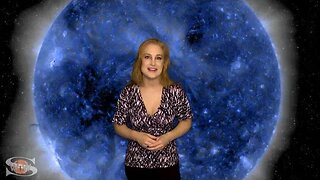 7:43
7:43
Dr. Tamitha Skov
2 years agoBright Regions Emerge Too Fast To Count | Space Weather News 09.22.2021
9 -
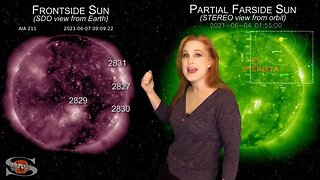 8:52
8:52
Dr. Tamitha Skov
3 years ago $0.01 earnedSolar Storms Amid a Solar Eclipse | Space Weather News 06.09.2021
62 -
 2:38
2:38
MadMalloy
8 months agoStrong Solar Storm, Big Science Change, Earthquake | S0 News Sep.19.2023
401 -
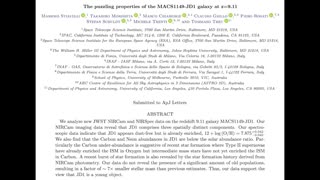 2:54
2:54
Rolling With You
9 months agoSuper Flare Potential of the Sun, Odd Galaxy, Storm Landfall | S0 News Aug.30.2023
140 -
 4:25
4:25
NasaSpaceVideosOfficial
10 months agoEarth Science Satellite Will Help Communities Plan for a Better Future
14 -
 2:51
2:51
MadMalloy
1 year agoSolar Forcing Rapid Climate Shifts, Goofy Galaxy, Space Weather | S0 News Nov.26.2022
561 -
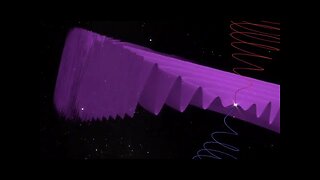 3:24
3:24
MadMalloy
1 year agoGalactic Current Sheet Evidence, Solar Storm Watch | S0 News Dec.7.2022
521 -
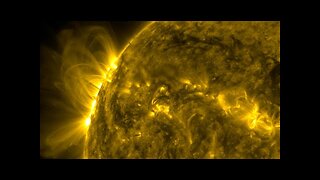 2:59
2:59
MadMalloy
8 months agoGeomagnetic Storm, Big Whack to the Field, Solar Forcing | S0 News Sep.25.2023
5421 -
 4:23
4:23
MadMalloy
1 year agoMore Solar Flares and More Coming, Major Disaster Potential Explained | S0 News Jan.16.2023
832 -
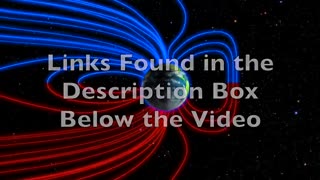 2:53
2:53
Rolling With You
10 months agoGalactic Current Sheet Detected, Solar Forcing | S0 News Aug.14.2023
186